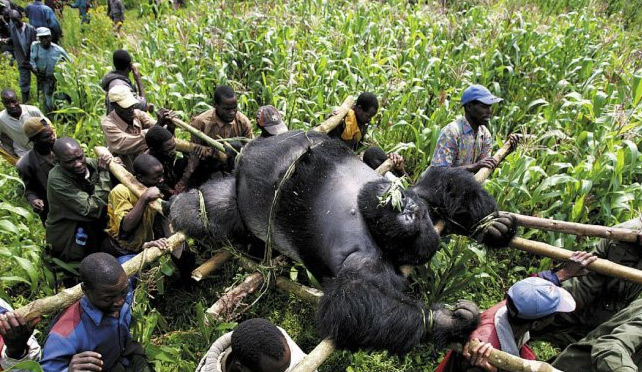
This means that no other animal is brave enough to attack them, but there are a few animals that will scavenge on their carcasses. In the wild, tigers are apex predators, meaning that they sit at the top of the food chain. We believe that nature conservation is best achieved through thoughtful, well directed nature education efforts and projects. An individual's contributions can have a measurable effect on the conservation of Earth’s biodiversity and an experience with a well designed, stimulating and emotive nature education program can be the catalyst that sparks that individual's passion for and commitment to nature conservation throughout life. Examples of Animals that Eat Tigers include alligators, boa, bears, crocodiles, and dholes. The Paly Foundation focuses on efforts that highlight the importance of conserving and protecting diverse natural habitats and wildlife populations. World Wildlife Federation profile on tigers Fish & Wildlife Service species information about tigers Fish & Wildlife Service Face Sheets on tiger conservation and the tiger trade Smithsonian National Zoo profile on tigers National Geographic Kids profile on tigers Every person, regardless of age or location, can help save tigers!Īnimal Ark profiles on Bengal tigers, Siberian tigers, and Sumatran tigersĪrticle about SooYong Park who works in the face of the Russian mafia to conserve Siberian tigers Learn about the innovative methods being implemented to make sure tigers continue to have a home in a balanced ecosystem. Hope for tigers Conservation efforts for saving tigers, in their natural habitats, are underway. Males are larger than females and may attain a shoulder. tigris tigris) is the most numerous and accounts for about half of the total tiger population. And only about 4,000 tigers are left in the world today. tigris altaica) is the largest, measuring up to 4 metres (13 feet) in total length and weighing up to 300 kg (660 pounds). Other large herbivores such as elephants and buffalo can also be. Three species of tigers are already extinct. Some of the natural predators of baby tigers include hyenas, leopards, crocodiles and pythons. Humans have relied on this balance for thousands of years, tigers are a part of their cultural heritage.Įndangered Species The chief threats to tigers in the wild are loss of habitat and poaching. This means lower levels of the food chain, including plants, depend on tigers.

Tigers are important! As apex predators, tigers keep their habitats in balance. Why do they have those stripes? How are house cats similar to the world's largest cats? Learn many "fun facts" about tigers. Tigers are amazing! Test your knowledge of tigers while learning some interesting facts. On Saturday, July 25 families with preschool and elementary-age children can enjoy a tiger-riffic afternoon at Tiger! Tiger! on Facebook Live. The Tiger! Tiger! exhibit is on display at Wright Library in the front reading rooms July 19 through August 19, 2020. In this exhibit-hosted at Wright Library, on loan from the PALY Foundation-explore the world of the tiger. However, tiger cubs may fall victim to adult. In some parts of the world, people share their environment with tigers just as we share ours with coyotes or hawks. Tigers are at the top of the food chain, and these animals generally do not have natural predators in the wild. Her ancestors have used this same road for as many generations as yours. Habitat Loss and fragmentation occurs when land is modified for. Tiger taxonomy was revised in 2017 based on new genetic analysis into two subspecies: Panthera tigris tigris, consisting of tiger populations in continental Asia, and Panthera tigris sondaica, including populations in the Sunda Islands.Imagine walking down a generations-old road.Ī rustle off to the side makes you snap to attention, and you hold your breath as a tiger crosses your path. The main threats to tiger populations today are habitat loss/fragmentation and poaching.

The tiger is the largest member of the felid (cat) family.

A tiger’s stripe pattern is like a fingerprint and can be used to identify individuals. The largest of the big cats, tigers are truly impressive animals with their black-striped orange fur and white bellies. Defenders of Wildlife protects big cats in North America, like Florida panthers and jaguars, and we tirelessly advocate for human-wildlife coexistence, which should never include making wild animals pets. With Tiger King shedding light on how big cats can be forced into cruel, unnatural living situations when held in captivity, you can see why it's more important than ever to protect all big cats in the wild and to preserve and restore habitat for these amazing creatures. Poaching of tigers became relatively rare, because there was no market for skins and other tiger products, although hunters on occasion killed their competitor.


 0 kommentar(er)
0 kommentar(er)
